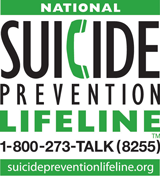Error processing SSI file
Suicide: Data Sources
Quick Facts
-
Suicide: Facts at a Glance [PDF 107KB]
This fact sheet provides up-to-date data and statistics on suicide.
CDC Data Sources
-
National Electronic Injury Surveillance System-All Injury Program (NEISS-AIP)
NEISS-AIP provides nationally representative data about all types and causes of nonfatal injuries treated in United States hospital emergency departments. CDC uses NEISS-AIP data to generate national estimates of nonfatal injuries, including those related to suicide. -
National Hospital Ambulatory Medical Care Survey
The National Hospital Ambulatory Medical Care Survey collects data on the utilization and provision of ambulatory care services in hospital emergency and outpatient departments. -
National Inpatient Sample (NIS)
The NIS is a database of hospital inpatient stays used to identify, track, and analyze national trends in health care utilization, access, charges, quality, and outcomes. The NIS is the largest all-payer inpatient care database that is publicly available in the United States, containing data from approximately 8 million hospital stays from about 1,000 hospitals sampled to approximate a 20-percent stratified sample of U.S. community hospitals defined by the American Hospital Association to be “all non-Federal, short-term, general, and other specialty hospitals, excluding hospital units of institutions.” Inpatient stay records in the NIS include clinical and resource use information typically available from discharge abstracts. -
National Violent Death Reporting System
CDC has funded 18 states and established the National Violent Death Reporting System (NVDRS) to gather, share, and link state-level data on violent deaths. NVDRS provides CDC and states with a more accurate understanding of violent deaths. This enables policy makers and community leaders to make informed decisions about violence prevention programs, including those that address suicide. -
The National Vital Statistics System
The National Vital Statistics System is the oldest and most successful example of inter-governmental data sharing. This system includes nationwide data on deaths due to all causes, including suicide. -
WISQARS
WISQARS (Web-based Injury Statistics Query and Reporting System, pronounced “whiskers”) is an interactive database that provides national injury-related morbidity and mortality data used for research and for making informed public health decisions. -
Youth Risk Behavior Surveillance System (YRBSS)
CDC’s YRBSS monitors health risk behaviors that contribute to the leading causes of death and disability among young people in the United States, including suicide.
Other Federal Data Sources
-
Drug Abuse Warning Network
The Drug Abuse Warning Network is a public health surveillance system that monitors drug-related hospital emergency department visits and drug-related deaths for the purpose of tracking the impact of drug use, misuse, and abuse in the United States. -
National Survey on Drug Use and Health (NSDUH)
Beginning in 2008 the National Survey on Drug Use and Health Report starting asking suicidal thoughts and behaviors of all adults aged 18 or older. Along with responses for the suicide-related questions, the survey collects nationally- and state-representative information on socio-demographic items such as age group, sex, ethnicity, employment, and income.
Non-Federal Data Sources
-
Pan American Health Association, Regional Core Health Data Initiative
In 1995, the Regional Core Health Data and Country Profile Initiative was launched by the Pan American Health Organization to monitor the attainment of health goals of the Member States. The initiative includes a database with 117 health-related indicators, country health profiles, and reference documents. -
WHO Statistical Information System (WHOSIS)
WHOSIS, the WHO Statistical Information System, is an interactive database bringing together core health statistics for the 193 WHO Member States. It comprises more than 70 indicators, which can be accessed by way of a quick search, by major categories, or through user-defined tables. The data can be further filtered, tabulated, charted and downloaded. The data are also published annually in the World Health Statistics Report released in May.
Need Help? Know Someone Who Does?

Contact the National Suicide Prevention Lifeline
- Call 1-800-273-TALK (1-800-273-8255)
- Use the online Lifeline Crisis Chat.
Both are free and confidential. You’ll be connected to a skilled, trained counselor in your area.
For more information, visit the National Suicide Prevention Lifeline.
- Page last reviewed: October 3, 2017
- Page last updated: October 3, 2017
- Content source:


 ShareCompartir
ShareCompartir
